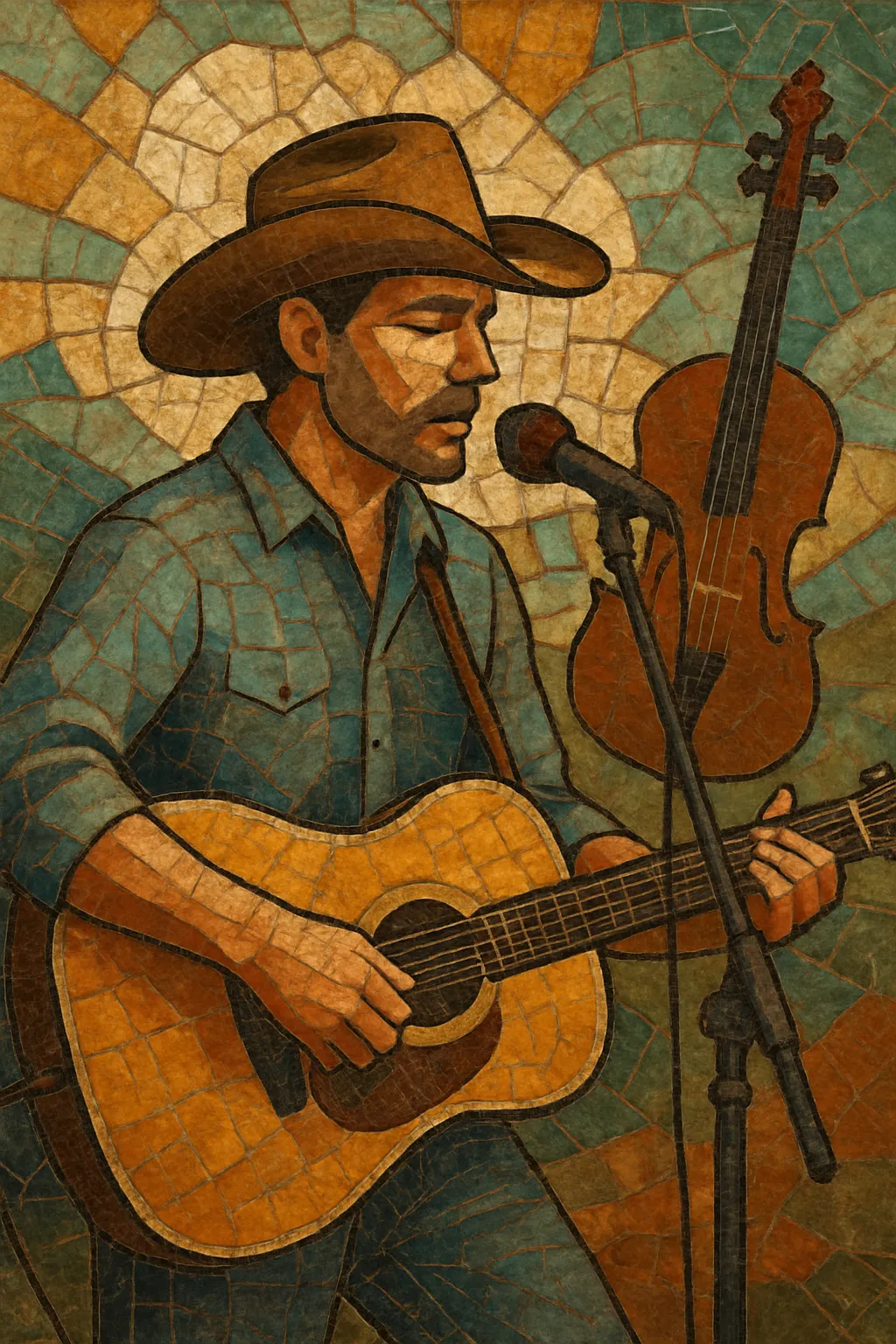
Country singer-songwriter is a narrative-focused branch of country music centered on artists who write and perform their own songs.
It blends the plainspoken storytelling and twang of traditional country with the introspection and craft of the broader singer-songwriter movement. Arrangements are typically acoustic-forward and organic—acoustic guitar, fiddle, pedal steel, piano, and understated rhythm sections—leaving space for lyrics about place, love, loss, work, faith, and memory. Melodies favor major and pentatonic contours, while harmonies lean on simple progressions that spotlight the voice and story.
The style emerged from Nashville’s writing rooms and Texas folk circuits, matured with the 1970s outlaw ethos, and later fed into Americana and alt‑country, maintaining an emphasis on authenticity, regional detail, and songwriter identity.
Country’s tradition of narrative ballads, honky‑tonk confessionals, and bluegrass storytelling laid the groundwork for artists who composed and performed their own material. As the broader singer‑songwriter movement took shape in the 1960s, Nashville’s publishing scene (Music Row) and Texas folk circuits nurtured writers who brought personal, literary detail to country idioms. Early exemplars began foregrounding the authorial voice over the star‑system of songs written by separate staff writers.
In the 1970s, figures like Kris Kristofferson, Townes Van Zandt, Willie Nelson, and Guy Clark crystallized the country singer‑songwriter archetype: intimate lyrics, economical melodies, and rootsy instrumentation. Simultaneously, the outlaw country movement loosened Nashville’s stylistic constraints, allowing writer‑performers to record with rawer production, regional color, and greater artistic autonomy. Albums became cohesive story collections rather than singles vehicles.
As mainstream country tilted toward polished production in the 1980s, a parallel lane—later labeled Americana and alt‑country—kept the songwriter front and center. Artists like John Prine and Emmylou Harris bridged classic country craft with folk storytelling, inspiring a generation of roots‑minded writer‑performers. The 1990s solidified the style’s identity beyond radio formats through independent labels, songwriter circles, and listening rooms.
The 2000s–2010s saw renewed visibility via Americana’s rise, festival stages, and digital platforms favoring album‑oriented writing. Artists such as Lucinda Williams, Gillian Welch, Jason Isbell, and newer voices like Sturgill Simpson, Kacey Musgraves, Tyler Childers, and Margo Price reaffirmed the genre’s core values: vivid storytelling, regional specificity, unvarnished production, and self‑penned songs. Today, the country singer‑songwriter approach remains a bedrock of roots and modern country, prized for authenticity and literary craft.

